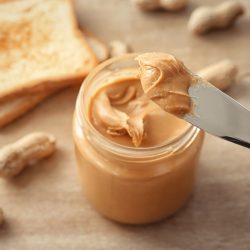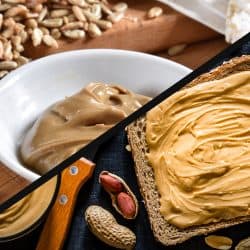Sometimes you need to melt peanut butter without a microwave. If you are wondering how to do this, you are at the right place. We have researched how you can melt peanut butter without a microwave, and we have the answers for you!
Here are a few options for melting peanut butter without a microwave:
- Saucepan [or pot for a large batch]
- Blender
- Food processor
- Whisk
- Mixer
Keep reading to learn more about how to make peanut butter runny, the best way to melt it without a microwave, whether or not it will burn in a pan, and more.
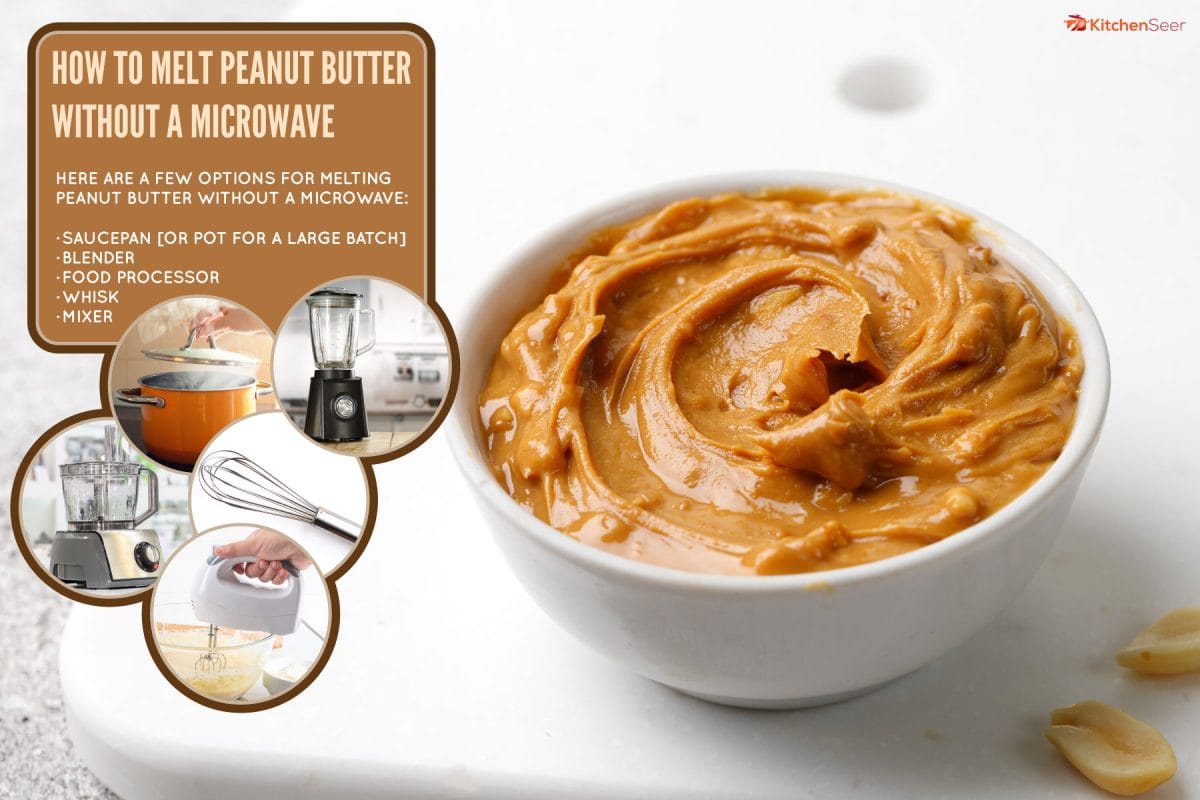
All About Melting Peanut Butter
Peanut butter is a staple food for anyone who likes it and isn't allergic. It is good for you in more ways than one. It has magnesium, Vitamin E and Vitamin B6, all of which benefit our bodies.
Another key point is that peanut butter is an excellent source of protein for picky eaters.
Some recipes call for melted peanut butter which can be drizzled over foods you love. Other recipes call for partially melted peanut butter.
If you only need partially melted or softened peanut butter, you do not have to heat it as long as you would otherwise.
Is it OK to melt peanut butter?
It is perfectly fine to melt peanut butter. In fact, there are many ways you can play around with melted peanut butter. An example is brownies with a peanut butter swirl. Another example is pretzels dipped in peanut butter.
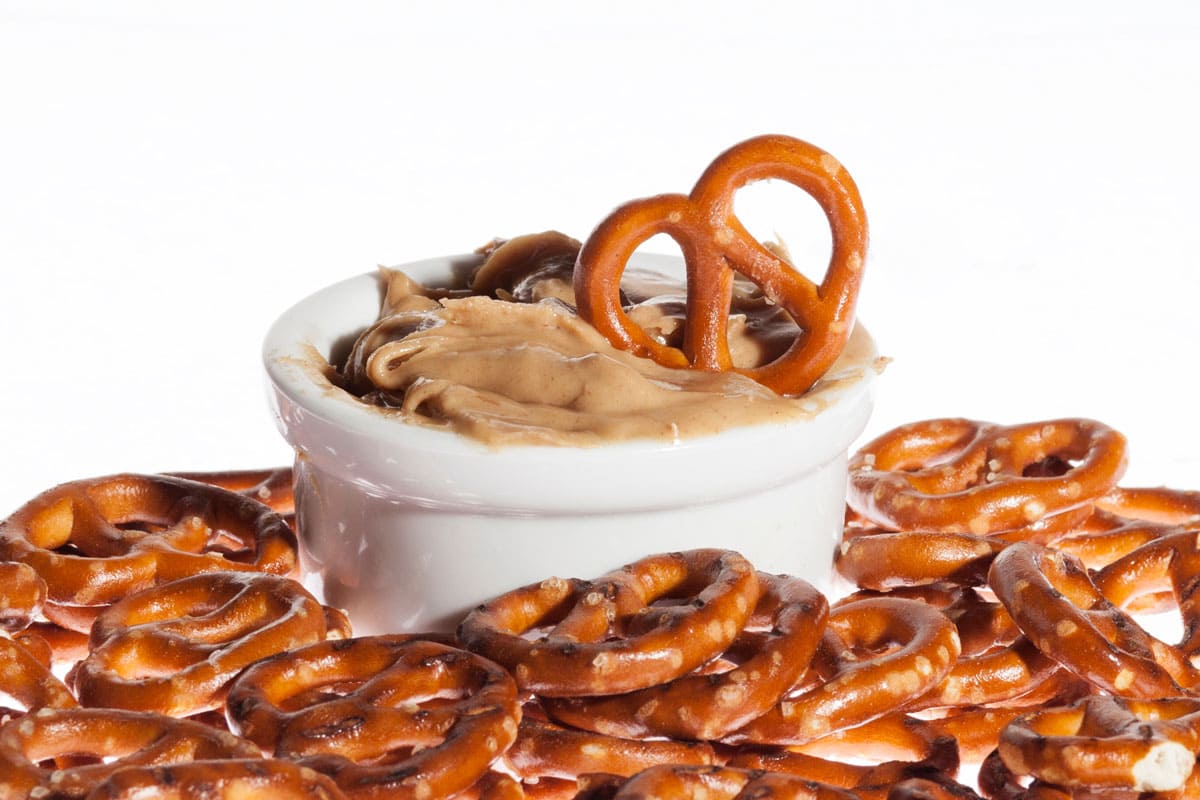
You can also mix melted peanut butter with a bit of cinnamon, vanilla, and honey into your oatmeal. Some people even like to drizzle melted peanut butter into their yogurt. If you are a peanut butter lover, it is worth a try.
How do you make peanut butter runny?
The fat in peanut butter causes it to become more solid than you might need it to be. To make peanut butter runny, all you have to do is heat it. You can also add peanut oil to make it thinner or runnier.
Runny peanut butter is perfect for pouring over popcorn, pancakes, or ice cream. It even works great over brownies too!
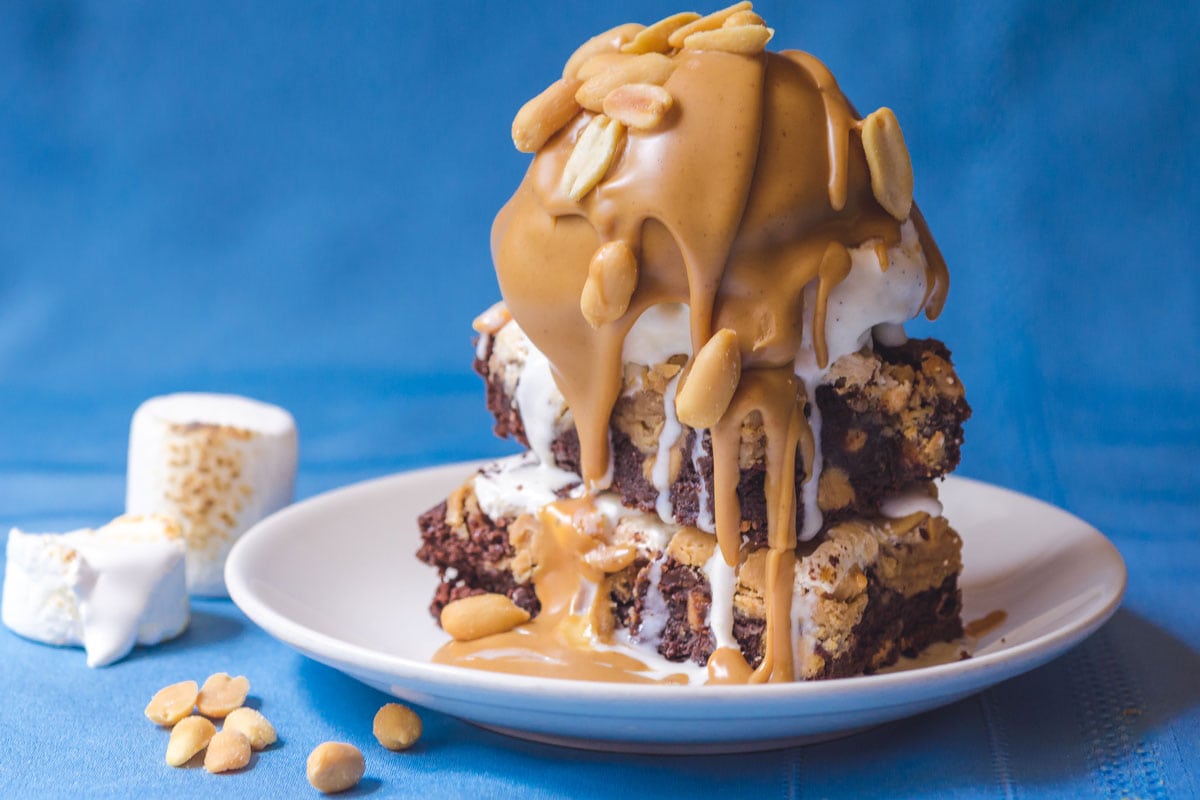
What's the best way to melt peanut butter?
Among the many ways you can melt peanut butter, it is natural to wonder which way is the best method. You can thin it out using several things you probably have in your kitchen right now.
The best way to melt peanut butter may be a microwave in intervals and mixing in between. With that said, there are several alternative ways you can melt it without one.
In a Sauce Pan
Melting peanut butter in a saucepan is the next best thing. Spread it evenly so that it heats up evenly.
You will need a large spoon and a saucepan that accommodates the amount of peanut butter you need to melt.
Begin by spraying the bottom of the pan with cooking spray. Turn the stove top onto low heat.
Take your time so that the peanut butter doesn't scorch and stick to the pan or get ruined. This process only takes about five minutes. Stir it continuously to avoid it heating unevenly.
Non-Heat Alternatives
Some alternatives to using a microwave to melt peanut butter include using a whisk, blender, or food processor.
When you whisk peanut butter, it is either the force of your hands stirring or utilizing an electric mixer that will vigorously mix the peanut butter, causing it to melt without heat.
Click here to see this hand mixer on Amazon.
If you use a blender or food processor to make peanut butter a more runny consistency, you will need to add milk [or, less preferred, water] to dilute it, making it thinner. Using a blender comes in handy when you are making shakes or smoothies. A food processor works very similarly.
Can you liquefy peanut butter?
You absolutely can liquefy peanut butter. This is where a food processor or blender will come in handy. All you need to do is blend it using a low setting for thirty seconds, then a higher setting until it is the consistency you want.
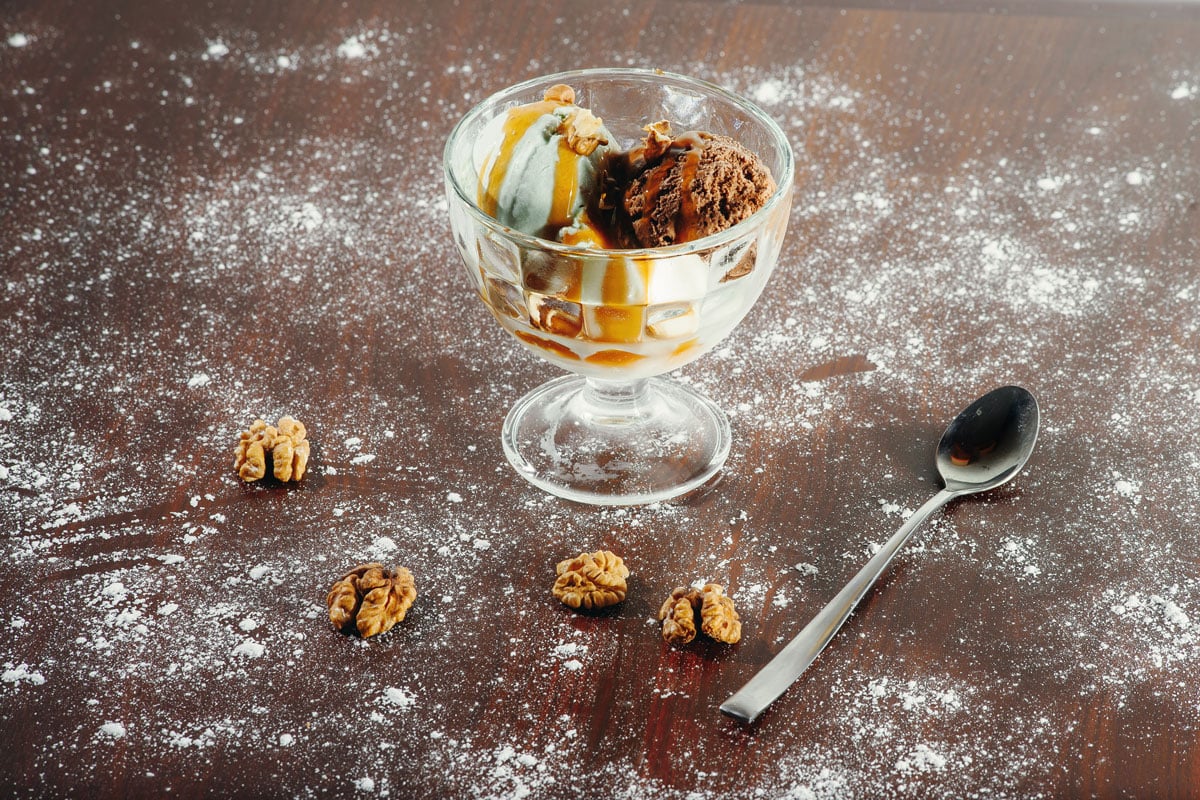
At what temperature does peanut butter melt?
Generally, peanut butter melts somewhere between 110 degrees and 120 degrees Fahrenheit.
This can vary slightly due to how fatty the peanut butter is. Peter Pan peanut butter has the most fat content per serving. Therefore, it takes longer to melt than other brands.
How do you soften peanut butter from the fridge?
Being in the refrigerator and getting cold will cause peanut butter to harden up faster than it would otherwise.
You have a few options for softening peanut butter from the fridge. If your kitchen is room temperature or you have the heat on, your peanut butter will begin to soften after it has been set out in the open.
Natural peanut butter has fewer additives in it. Some companies add sugar, trans fats, and vegetable oil, which might impact how it melts.
You soften peanut butter the same way you melt it, except you do not mix it for quite as long. If you want your peanut butter to be softened but not melted, do not use a blender or food processor.
In this case, it is best to use a whisk and mix it by hand or slowly in a pan on your stovetop. Stir it often while paying close attention to the consistency.
Can you dissolve peanut butter in milk?
Yes, you can dissolve peanut butter in milk. Accordingly, people every day add peanut butter to their protein shakes.
Peanut butter is also great in milkshakes. You can warm milk up if you are trying to dissolve peanut butter in it faster.
Click here to see this Ninja blender on Amazon.
Chunky peanut butter does not dissolve as quickly as smooth since it still has peanuts that have not been ground yet.
A food processor is how most people blend their peanuts if they make their own peanut butter. This peanut butter is fresh with no preservatives or additives.
When you mix peanut butter with milk or water, the ratio is 1:1. You should mix equal amounts of liquid and peanut butter.
Can I boil peanut butter?
Technically you cannot boil peanut butter. It will not boil on its own. You can melt it in a saucepan or pot on your stove top in water or milk.
The only way you would need boiling water when melting peanut butter is if you were double boiling it.
What we mean by this is to use a safe dish to boil and put the peanut butter into that dish inside a pot with a few inches of boiling water.
This is done to avoid peanut butter getting too hot on the bottom of the pan.
Does peanut butter burn in a pan?
Peanut butter has the potential to burn in a pan. You must continue to mix it while heating it to avoid burning it.
If you decide to melt peanut butter in a pan, do not put it into a pan that is already hot.
Something to keep in mind is that peanut butter doesn't always clean up too easily. Hot water helps with that when cleaning, but what about while melting it?
Silicone spatulas work great for effectively getting peanut butter out of a pan after you have finished melting it.
Click here to see this set of spatulas on Amazon.
You should heat peanut butter up slowly to avoid accidentally burning it. Turn your stove top on low heat and take your time to melt the peanut butter. Stir it frequently.
Use a spatula to clean the sides of your pan and keep the peanut butter warming evenly.
If you burn peanut butter, it is going to taste different. You may end up having to warm new peanut butter up. Save yourself the additional time and money and do it slowly.
A Quick Re-cap
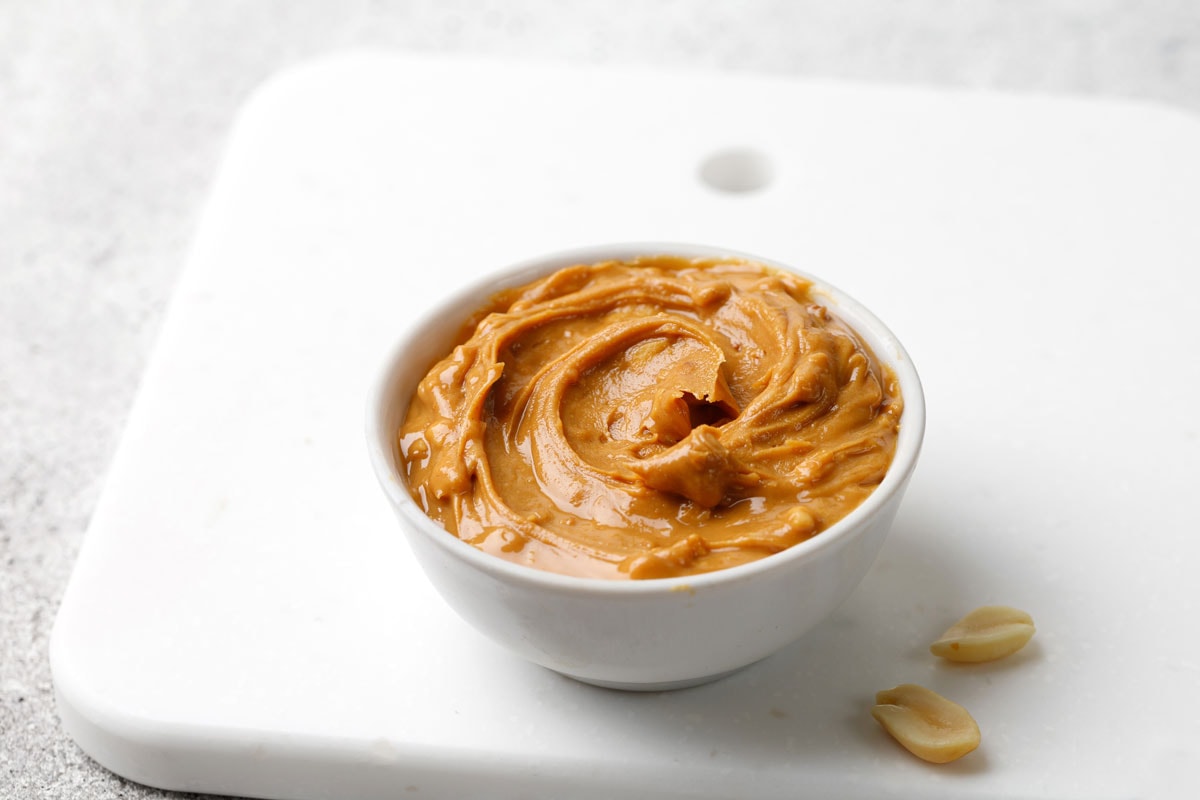
A saucepan is the best method for melting peanut butter whenever you don't have a microwave.
Other options include using a blender, pot, food processor, or whisk. Adding milk or water helps peanut butter dissolve more quickly.
Peanut butter does stick to the pan if it gets too hot, so be vigilant when melting it.
Before you go, check out the following links that might interest you:
Can I Use A Meat Grinder For Peanut Butter?
Sunflower Butter Vs. Peanut Butter – How Do They Compare?
Can You Bake With Almond Butter?




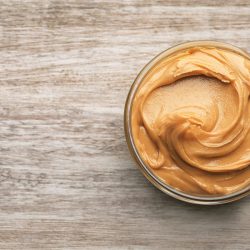

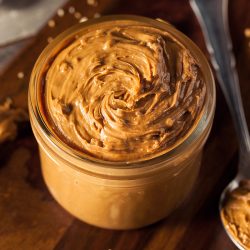
![A glass jar with creamy peanut butter on wooden table, Can Peanut Butter Go Bad In Heat? [Yes! Here's How To Tell If It's Spoiled!]](https://kitchenseer.com/wp-content/uploads/2022/10/Glass-jar-with-creamy-peanut-butter-on-wooden-table-250x250.jpg)
